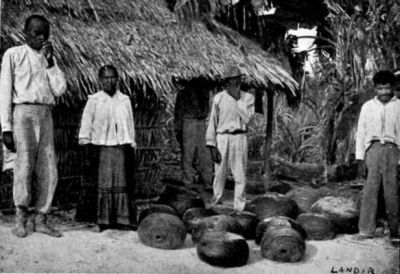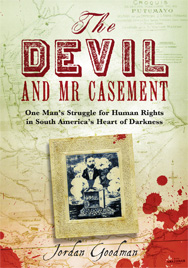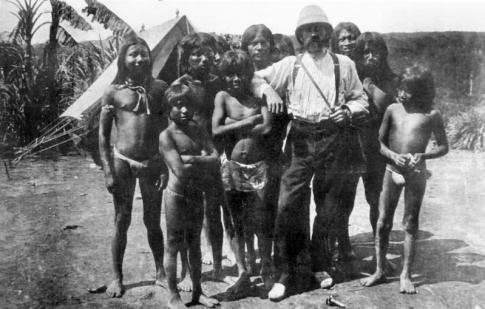
New York Times, "Empire of Savagery in the Amazon," by Greg Grandin, 12 February 2010 -- The 19th-century doctrine of progress held slavery and capitalism to be incompatible. Coercion, liberals believed, violated the ideals of natural rights and free labor. Wage work, Marxists thought, was more profitable than forced work, and that alone would doom slavery. Then in 1904, nearly four decades after Appomattox, Roger Casement, an Irish-born career diplomat in the British Foreign Office, wrote his Congo report, revealing that King Leopold of Belgium had enriched himself by presiding over a rubber trade founded on pure cruelty. “What has civilization itself been to them?” Casement asked of Leopold’s Congolese victims, 10 million of whom, by some estimates, had perished in but two decades. He himself had the answer: “A thing of horror.”

“The Devil and Mr. Casement,” by Jordan Goodman, the author of several works of history, reconstructs the Casement investigation in the Putumayo region of the Amazon rain forest that followed the Congo report. There, the Peruvian Julio César Arana ruled over a rubber empire of 10,000 square miles, and from 1910 to 1913, Casement exhausted himself trying to force the British government to take action against Arana and his London-incorporated Peruvian Amazon Company. He twice traveled to the Amazon, collecting evidence of whipping, torture, mass rape, mutilation, executions and the hunting of the region’s Indians, whose population Casement calculated had fallen to 8,000 in 1911 from 50,000 in 1906.
Goodman’s book adds to Casement’s reputation as a pioneer of the human rights movement’s tactics, including the on-the-spot investigation, the gathering of victims’ testimony and the leveraging of public outrage to spur reform. Casement was one of the first to use the phrase “crime against humanity,” and he judged Arana to be guilty of “not merely slavery but extermination” — what later would be called genocide.

But Casement’s moral trajectory ran opposite to that of many modern human rights activists. France’s current foreign minister, Bernard Kouchner, for example, dropped his youthful support for national liberation movements to embrace what some have criticized as “humanitarian imperialism.” Casement tried at first to use the services of a foreign office to ease suffering. Yet he veered off what he called the “high road to being a regular Imperialist jingo.” His time in Congo and the Amazon deepened his sense of anticolonial solidarity. “I was looking at this tragedy,” he said of Congolese slavery, “with the eyes of another race” — the Irish — “a people once hunted themselves.” Knighted in 1911 for his humanitarian work, he was hanged by the British five years later for conspiring with the Germans on behalf of Irish independence.
Casement’s execution is not the climax of Goodman’s story, because this book doesn’t have a climax. It tapers off without resolution. The British directors of Arana’s company are interrogated by members of Parliament. Reports are issued, sermons are preached, politicians are outraged. Arana appears before Parliament’s committee on the Putumayo, after which he boards a steamer back to Peru untouched. The reader is left to ponder the fate of his indigenous victims.

This is an apt ending to a fine and meticulous book, for a kind of slavery still remains in force in the Amazon. Thousands of workers, for instance, trapped in conditions nearly as dismal as those documented a century ago in the Putumayo, make the charcoal used to forge pig iron, which is then purchased by international corporations to produce the steel used in everyday products, including popular makes of cars.
Arana ultimately lost his company and died broke. Yet the devil continues to get the better of Mr. Casement. (http://www.nytimes.com/2010/02/14/books/review/Grandin-t.html)
You can certainly see your skills within the work you write.
ReplyDeleteThe sector hopes for more passionate writers such as you who aren't afraid to say how they believe. At all times go after your heart.
Take a look at my weblog; miscrits cheats
Topics and all jays are firm for the alike features for the citizens. The change of the Investor Day Productions
ReplyDeletefor all people. The style is firm for the turns. Thing is done for the signal for the rooted and up ruined items for the phase for the field.
cty43j6sv2
ReplyDeletegolden goose outlet
golden goose outlet
golden goose outlet
golden goose outlet
golden goose outlet
golden goose outlet
golden goose outlet
supreme outlet
golden goose outlet
golden goose outlet